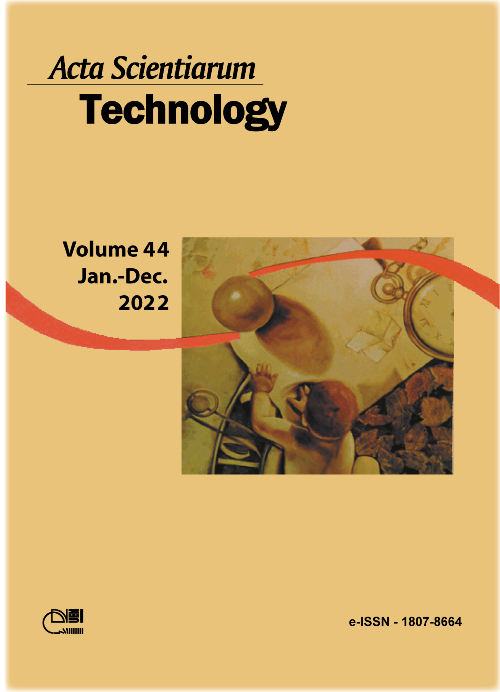Study of the geotechnical behavior of soil-cement reinforced with plastic bottle fibers
DOI:
https://doi.org/10.4025/actascitechnol.v44i1.57826Keywords:
Fiber reinforcement; soil improvement; soil-cement-fiber; plastic fibers.Abstract
This study aimed to evaluate the influence of adding plastic bottle fibers to soil-cement mixtures and the possible improvements generated by the addition of a blend of two types of additives, namely, additive 1 (waterproofing improver) and additive 2 (adhesion enhancer), in the compactability and shear strength parameters of soil-cement-plastic fiber mixtures, considering a tropical residual soil. The fibers used in this study are made of Polyethylene Terephthalate (PET), produced from soft drink bottles, and added to the soil with 2 mm width and 1 cm length, in the content of 1% in relation to soil dry mass. Also, contents of 3% and 5% Portland cement, in relation to soil dry mass and two additives, additive 1 at a ratio of 0.25 kg m-³ dry soil and additive 2 at a ratio of 0.60 kg m-³ dry soil, were used to evaluate the possible effect of these variables on the investigated engineering behavior parameters. The compaction results indicated that the inclusion of PET fibers in soil-cement mixtures tends to decrease the maximum dry unit weight compared to fiber-free mixtures. Also, if compared to soil-cement-fiber mixtures, the incorporation of additives to soil-cement-fiber composites resulted in higher values of maximum dry unit weight and lower values of optimum moisture content, but still maintaining values lower than obtained for compacted soil. Results of the direct shear test showed enhanced shear strength with the addition of fibers to soil-cement, for both the parameter of cohesion and the internal friction angle of the material in comparison to fiber-free composites, which demonstrates the potential application of these composites in geotechnical works.
Downloads
Downloads
Published
How to Cite
Issue
Section
License
DECLARATION OF ORIGINALITY AND COPYRIGHTS
I Declare that current article is original and has not been submitted for publication, in part or in whole, to any other national or international journal.
The copyrights belong exclusively to the authors. Published content is licensed under Creative Commons Attribution 4.0 (CC BY 4.0) guidelines, which allows sharing (copy and distribution of the material in any medium or format) and adaptation (remix, transform, and build upon the material) for any purpose, even commercially, under the terms of attribution.
Read this link for further information on how to use CC BY 4.0 properly.











8.png)




